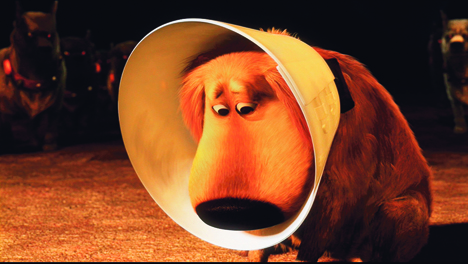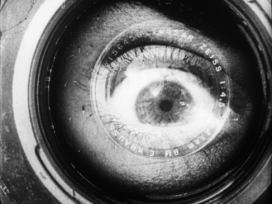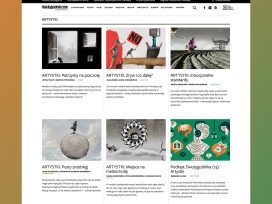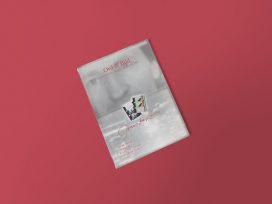Cultural animal studies insist on blurring the divide between human and animal. Psychoanalysis, on the contrary, insists on this divide in its attempt to understand what it means to be a being of language and desire, that is a human subject. Psychoanalysis takes care to distinguish animal need, which can be fulfilled, from human desire, which can never be satisfied. Furthermore, to be a subject of desire means to psychoanalysis to be in permanent dialogue with “the big Other”, which is Lacan’s term for the somebody or something supposed to know what the subject desires, or supposed to desire the subject to desire certain things. The big Other is the feeling that somebody out there (whether I imagine it to be my parents, my shrink, God, Lacan or someone or something else) knows what I want and wants me to want it.
To Renata Salecl, the big Other is what distinguishes human from animal. In her wonderful essay on dogs and humans she points out that in Pavlov’s experiment the dogs “do not become troubled with the desire of the experimenter: dogs do not question the desire of the Other. And this is what distinguishes them from human beings.” (Salecl 2000: 113)
To be a human subject means to be animated or possessed by something (language, desire, the Other) that is not part of our biological being. As Slavoj Zizek puts it, thus distinguishing between animal and human: “Humanity means: the alien is controlling our animal bodies”. Zizek pronounces this definition in Sophie Fiennes’ documentary The Pervert’s Guide to Cinema, and his cinematic examples of the “alien” is the human voice, for instance as we see it leave the body of the possessed girl in The Exorcist. Zizek’s point is that the voice, the medium of human language, is animating our bodies like an alien.
In Pixar Studio’s computer animated movie Up the issue of the human/animal divide is staged in the image of speaking dogs. The dogs’ master has given them voices by providing them with electronic necklaces that somehow translate their thoughts into human speech. This is certainly an image of the human voice as an “alien controlling animal bodies”.
The dogs in Up are animated by their master’s voice, and the film presents us with the question whether their human language turns them into creatures of desire and their master into a figure of the big Other. On one hand the dogs are presented as animated by conditioned stimulus, like Pavlov’s dogs, which started to drool when they heard the ringing bell that they had been conditioned to associate with food. On the other hand they are, through the theme of “his master’s voice”, presented as animated by their Master’s desire. Or, as Lacan would have it: the dogs are drooling as a result of Pavlov’s desire. What makes us drool, what animates us? Are we animals, animated by conditioned stimulus? Or are we, like the dogs in Up, humanized by our alien voices and the big Other?
*
Up tells the story of the balloon-salesman Carl Fredericksen and the two great adventures of his life, the first one his long marriage with his beloved Ellie, the second one his travel as a widower, by multi-coloured balloon-driven floating house, to the goal of their common longing: the magnificent “Paradise Falls” in South America.
We meet Carl as he and Ellie, as young children, first meet each other through their common passion for adventures and explorers, notably the famous Charles Muntz who has discovered the Paradise Falls.
After Ellie’s death Carl becomes a grumpy old man, sitting sour and bitter on the porch of his multi-coloured house, which is the only one left in a construction field. As he is sentenced to move to a retirement home, for hurting a construction worker with his walker, he ties thousands of multi-coloured balloons to his house and takes off, heading for Paradise Falls. It turns out that he is not alone, though, the boy scout Russell is clinging to the porch of the floating house.
This very odd travel company, the grumpy old man with his walker and the non-stop-talking boy scout, lands in the rocky landscape of the Paradise Falls. Here they meet… a group of talking dogs! The dogs have voices, because their master Muntz, the villain of the film, has put electronic necklaces around their necks. These necklaces operate as “translators” that enable the dogs to talk.
The plot now evolves around a huge multi-coloured bird that Muntz and his dogs have been chasing for decades. A skeleton from this kind of bird caused Muntz’s fall from grace as he presented it at home and was accused of fraud. Muntz, at first welcoming the guests on board his Zeppelin airship with great hospitality, turns out to be a villain, absorbed by his hatred for the bird who ruined his carrier. Through a lot of chasing and a final great battle between the two old men, Fredericksen conquers Muntz and rescues the bird, but loses his house, which disappears into the sky. Fredericksen and Russell return home in Muntz’s Zeppelin, along with the dog Dug. Back home Fredericksen takes on the role of Russell’s absent father, and together with Dug they form a small family.
The split between body and voice
In his book The Voice in Cinema the French film theorist Michel Chion has pointed to the split between voice and body as not only constitutive of the human subject, but also a feature of cinematic art and its history: in the era of the silent movies the bodies on the screen had no voices, and even now their voices actually emanate from another place, so that the spectator has to create the perceptive illusion of the voices as emanating from the screen. Chion reminds us that voice had a disappointing or even comic effect when it was first introduced in the cinema. Greta Garbo and other actors known from silent movies did not have the voices that people expected. Thus the actual voice was a disappointment compared to the voice in the spectators’ fantasy: “Once heard in reality even the most divine voice has something trivial about it.” (Chion 1999: 9) In Up, when the leader of the dogs, the Doberman pinscher Alpha, first opens his mouth to speak, he has, due to a technical problem, a ridiculous Mickey Mouse voice. This has a comic effect not unlike what happened when the audience heard the actors’ voices for the first time. In these examples the voice is the object of (the spectator’s) desire, the actualization of which is always disappointing, compared to the fantasy.
The voice may seem to be the trademark of human subjectivity, but Lacan actually gives to the voice the status of an object. That is, the voice is an object of our desire, illustrating how the object of desire is always transitory, fugitive, ungraspable. We may for a moment think that now we’ve got it, the voice, now it is present and almost graspable, for instance in the throat of an opera diva performing her solo, but actually it is impossible to hold it.
Lacan’s term for this object of desire that never completely fulfils our desire, is objet petit a. We shall see how the voice, in Michel Chion’s Lacanian voice theory as well as in Up, figures both as petit objet a, and as the big Other, that is (in Lacan’s French notations) both as a and as “A”.
The voice is actually highlighted from the start of Up. The film opens with Carl as a young boy at the cinema in the 1930s, completely absorbed by his hero, the adventurer Charles Muntz, who is on the “Movietown News”. The images of Muntz (and Carl watching Muntz) are accompanied by a typical, agitated 1930s news reporter voice telling the story of Muntz’s fall from grace as the huge skeleton he brought back from his expedition to Paradise Falls is revealed as a fake. At the end of the reportage we hear Muntz’s own agitated voice, speaking from a rostrum to a large crowd of people: “I promise to capture the beast alive, and I will not come back until I do.” His gestures, his moustache, the enthusiastic crowd, the 1930s – all of this gives to his amplified voice the connotations of a dictator’s voice. As Carl leaves the cinema (in a sliding cut which fixates his boyish face while changing the background from projector-lit cinema to sun-lit pavement), the voiceover from the news continues, reporting Muntz’s movements, which Carl imitates in when playing: “He hurdles Pikes Peek, he hurdles Grand Canyon, he hurdles Mount Everest.” Thus Carl’s game seems to be animated by a voice, the agitated reporter’s voice, while Muntz’ voice is introduced as a master’s, even a dictator’s, voice.
In animated films the silent movie seems to have partially survived. Even after the talkie had made its entrance, animation films could still be silent and even if not continue the slapstick style of the silent movie. In Up the whole fast-forwarded, powerful summary of Carl’s and Ellie’s marriage is without speech. But actually it seems to be a mixture of two different speechless genres: the pantomime and the silent movie. The scenes testifying to the married couple’s happiness are like pantomime; we neither see nor hear the characters talk, they express themselves through their acts and poses and mimic and gests. Here voice is not lacking, the language without words seem to be a valid or even more valid expression of happy love. Only two scenes are like a silent movie, that is, we see the characters speak (move their lips), but we do not hear what they are saying. This is the scene when Ellie and Carl are lying in the grass and looking up at the clouds in the sky, telling each other what they think they look like, and the scene when Ellie is sitting depressed at the doctor’s. Here voice is present as a lack. Indeed, the scenes actually tell about the lack in Carl and Ellie’s life, the lack of a child. In the cloud scene, the clouds turn into little babies, as we see them through Carl’s and Ellie’s imagination, thus the baby is introduced as little object a. In the scene at the doctor’s we can deduce that the couple receive the news that Ellie cannot have children, so the desire of a child turns into the permanent lack of a child.
The voice without body
Michel Chion’s main point of interest is actually not the body without the voice which may then become a fantasmatic small object a, but the voice without the body, the “acousmêtre” as Chion calls it; the acoustic being. In his analysis of Hitchcock’s Psycho (Chion 1992) he shows how the phenomenon of the acousmêtre is the driving force of the whole plot. We hear the voice of Norman Bates’s mother, that cruel sadist superego voice of an old woman, and our narrative desire becomes the desire to discover the body from which this voice emanates. The satisfaction of this desire is horrible: the body of the voice turns out to be the mummy that turns its non-face towards us in one of film history’s most famous horror scenes.
The acousmêtre, this bodiless voice, has a special power that Chion actually divides into four special powers: “The powers are four: the ability to be everywhere, to see all, to know all, and to have complete power. In other words: ubiquity, panopticism, omniscience, and omnipotence”. (Chion 1999: 24) The bodiless voice is ubiquitous, because we cannot localize it to one single point, and thus feel surrounded by it. It is panoptic, because of a basic paranoid mechanism in our consciousness: the one whom I cannot see, is watching me. The omniscience and omnipotence follow from the ubiquity and panopticism. Chion points to the fact that God appears as an acousmêtre, as pure voice, in all monotheist religions. One might even wonder if the prohibition on picturing God (in Judaism and Islam) has the function of preserving the power of the acousmêtre, knowing that only the voice with no body can be ubiquitous and omnipotent.
In Lacanian terms, the acousmêtre is the big Other, the subject supposed to know (everything), the instance watching me always and everywhere, also when I am all by myself. One might say that Chion treats the voice both as objet petit a (the never satisfying object of desire, like the actors’ dissatisfying voices when silent movies became talkies) and as the big Other (the omnipotent acousmêtre).
Chion proposes that the acousmêtre “takes us back to an archaic, original stage: of the first months of life or even before birth, during which the voice was everything and it was everywhere […] The greatest Acousmêtre is God – and even farther back, for everyone of us, the Mother”. (Chion 1999: 27)
If and when the acousmêtre finds a body, it most often loses its power. Chion speaks of “de-acousmatization” and points to the clearest example from film history: the last scene of The Wizard from Oz in which the great wizard whose voice emanates from behind the curtain, is revealed to be a small funny guy speaking into a microphone while he mechanically creates effects of sound and smoke. (Chion 1999: 27) In Lacanian terms this is the moment when the big Other is revealed to be just an illusion, or as Lacan states it: “There is no Other for the Other.” This it what Dorothy realizes at the end of The Wizard of Oz: “For Dorothy this de-acousmatization marks the end of her initiation, this moment when she mourns the loss of parental omnipotence and uncovers the mortal and fallible Father.” (Chion 1999: 29)
In Up the acousmêtre appears twice. In the childhood scene in the beginning Ellie actually makes her entrance as an acousmêtre. As Carl is walking the pavement (or rather hurdling Pikes Peek, Grand Canyon and Mount Everest), the voice over continuing from the Movietown News is suddenly doubled by a loud and agitated girl’s voice: “Adventure is out there!” The voice over, itself a voice without a body, is thus taken over by another acousmêtre, emanating from an abandoned shabby house, and Carl goes looking for the voice’s body, which turns out to be a small girl dressed in the same explorer’s goggles and helmet as Carl, pretending the house to be Charles Muntz’s zeppelin, agitating its “steering wheel” while shouting and screaming excitedly. When she discovers Carl, she shouts and screams at him, her angry face with missing teeth to the fore. Here the acousmêtre does not really lose its power from being embodied, but the fact that Ellie appears at first as a bodiless voice seems to emphasize her role as the one who takes command of Carl’s life for the next several decades.
The second acousmêtre appears when Carl and Russell are striving their way through the rocky landscape of Paradise Falls and suddenly hear a voice: “Hey, are you okay over there?” As they (and the spectator) search for a body for this voice, a shadowy grey human-like figure seems to stand out from the rocks, and Fredericksen addresses him. Chion writes that just like the human figure structures visual space, so the human voice structures acoustic space. That is, we will search for a human figure in order to organize our space visually, and for a human voice in order to organize our space acoustically. Here for a moment, the structuring of visual and acoustic space seems to coincide when the human voice is located in the human-like figure. But as Fredericksen and Russell are approaching the “human” figure, it splits in two, revealing itself to be a rock, or actually two rocks. Instead of the desired union between voice and body we get a splitting of the (only apparently) human figure. This is a radical variation of Chion’s de-acousmatization. For a moment, when still at a distance, the tall, faceless human-like shadow seems to embody the omnipresent voice that gives to it the aura of some kind of god. But when we approach it, it loses both its god-likeness and its voice. In stead we get a split figure, a splitting or castration of the big Other.
The confusion between rock and human figure triggers a kind of Rorschach perspective on every rock, not unlike the scene from the marriage montage in which Carl and Ellie find figures in the clouds. In a figure of inversion, another rock actually turns out to be a living dog. The question of animation is at stake: the apparently animated turns out to be inanimate, the apparently inanimate turns out to be animated. Fredericksen shouts out to the omnipresent voice: “We have your dog”, but it turns out that the voice actually belongs to the dog. This is revealed when the dog responds to Russell’s tentative orders: “Sit!” (the dog sits), “Shake!” (the dog gives his paw), “Speak!” – the dog says “Hi, there!”
The dog is drooling from Pavlov’s desire
Here we have the film’s very remarkable and interesting image of voice as animating power: the voice is applied to the dog through an electronic necklace, a kind of “translator” of the dog’s interior monologue. As the voice humanizes the dogs, at the same time it corresponds perfectly to Slavoj Zizek’s definition of the voice as an alien, and humanity as “the alien controlling our human body”. The strangeness of the voice, the voice as an alien organ, is further stressed by the fact that the dogs do not move their mouths as they speak. The fact that the voice is given to the dog by his master, that it is actually “his master’s voice”, points to voice as something induced in us by the big Other, a response to the big Other’s question: “Che vuoi?”
“Man’s desire is the desire of the Other”, writes Lacan (Lacan 1979: 235), meaning both that man desires the Other, and that his desire is somehow the Other’s desire. Lacan goes on saying that “the Other’s question” is “Che Vuoi?”, Italian for: “What do you want?” In Mozart’s opera, this is Don Giovanni’s question to the paternal statue that comes to judge him, but in Lacan’s usage it is just as much the statue’s, the Other’s, question to Don Giovanni.
As creatures speaking with their master’s voice the dogs seem to point to the Lacanian definition of the subject as constituted through its relation to the big Other. As a response to Russell’s order (“Speak!”) the dog’s speaking voice is rather pictured as conditioned reflex, along with its other responses. This seems to confirm behavior theory, Dug having been conditioned, like Pavlov’s dogs, to produce certain responses to certain stimuli. This theme reoccurs when the whole bunch of dogs regularly responds to the words “Squirrel” or “Treat” by becoming all excited. “Conditioned stimuli” is one, mechanist, answer to the question: “What animates the subject?” Man is a human dog, a kind of animal machine. But in the image of the voice as that which animates us, and is at the same time an alien, we get quite another answer: Man is an animal body animated (humanized) by an alien which puts him in constant dialogue with the big Other. One could also say that there are two different ways, both represented in the film, to understand the idea that the subject is animated by his master’s voice: one is mechanical, the subject is conditioned by a master, the other one is psychoanalytical: the subject is born from a dialogue with the big Other, which induces into him a speaking voice like some kind of alien.
Pavlov’s experiments are based on the dog’s need, their hunger. The conditioned stimulus (the ringing bell) produced salivation because it was associated with food. But by having a speaking voice and entering into dialogue with the big Other, the dogs in Up exceed the logic of need and enter into the logic of desire.
The only desire at stake in Pavlov’s experiments is, to Lacan, Pavlov’s own. It is Pavlov’s desire that makes the dogs drool. “There is no other subject here than the subject of the experimenter” (Lacan 1979: 228). Pavlov is the one to get satisfaction from the experiment. To Lacan, Pavlov actually does not prove anything about the functioning of the dog’s brain, but about the functioning of the signifier. The ringing bell is a signifier, and Pavlov’s domesticated dogs learn to respond to this signifier by the principle of equivalence (ringing bell is equivalent of food), but not by the principle of deference and difference (Derrida’s difference) that is the dynamics of the signifying chain of human language.
In her essay “Love me, love my dog: Psychoanalysis and the animal/human divide” Renata Salecl describes the Russian performance artist Kulik exhibiting himself as a dog, crawling around naked on the floor of galleries, wearing a dog’s necklace tied to a chain. Kulik once even played Pavlov’s dog, in order to encourage the study of the psychology of animals. His idea was to propagate a new symbiosis between human and animal, a new “zoocentrism” in which man is regarded as “a subculture in the larger whole of the noosphere (derived from noos, the ability to smell, to feel.)” (quotes from Kulik’s catalogue for his 1996 Rotterdam show, Salecl: 107).
In one of its first lines, still in the state of an acousmêtre, the dog in Up actually refers to its sense of smell: “I can smell you.” But as soon as this sense of smell is verbalized, it exceeds the “noospheric” and enters into the linguistic sphere of the human subject. Salecl insists with Lacan on the distinction between those spheres, she insists that the distinction between man and dog must be maintained, despite the wish to deconstruct it that we find in constructivist and deep ecologist trends of thought.
It is precisely by playing the dog that Kulik, despite his intention, actually makes the human/animal divide very clear. As Salecl argues, he will probably never get dogs to watch his show. Whereas he himself is “in desperate need for the audience, the gallery or, in general, the big Other. Kulik, like his predecessor Diogenes, finds enjoyment in posing as a dog only when others observe him.” The dog, on the contrary, does not relate to the big Other, it has a certain self-sufficiency that Kulik and other animal-lovers desire, but “it may be harder for humans to learn self-sufficiency from dogs than for dogs to learn language” (Salecl: 115).
In seminar IX, Lacan actually speaks of a dog that speaks, his own dog Justine. But his point is that she only speaks to him when she needs to, due to some inner pressure. When she addresses herself to him, he never has the function of the Other. As a domesticated dog, Lacan’s Justine to some degree lives in language, but without the big Other. As Salecl puts it: “The dog is in language, but it does not relate to the chain of signifiers – the big Other” (Salecl: 111).
The subject is animated by the chains of signifiers and her dialogue with the big Other rather than by the instinct of self preservation, or the principle of avoiding suffering. Salecl: “If psychoanalysis teaches us anything, it is that human beings are not inclined to achieve happiness. On the contrary, they find special enjoyment in suffering […] – as beings of language, they are essentially marked by a force of self-annihilation, i.e. the death drive.” (Salecl: 108) The old grumpy Fredericksen stubbornly staying in his old house, even taking to violence, in order to stay true to the love of his life, is a simple example of this; he does not act to preserve himself, but to preserve his desire, and may even take some enjoyment from his grumpiness.
By having a speaking voice, the dog in Up exceeds its doggish state, enters into the chain of signifiers and relates to the big Other. The response to the order “Speak!” exceeds the logic of the conditioned reflex, as one word (or signifier) takes the other in an unpredictable chain of speech. When Dug mechanically responds to the orders “Sit!” and “Shake!” Russell and Fredericksen are satisfied and smiling. But when he responds to the order: “Speak!” by actually having a human voice, they are shocked, as we now enter a territory beyond pure mechanist logic, the territory of language.
But the speaking dog is not only a figure of human language that interrupts the mechanical, it is also a figure that points to a mechanical aspect of human language. The speaking dog points back to the scene in which Russell first knocks on Fredericksen’s door, reading the lines from his “Wilderness Explorer’s Handbook”: “Good afternoon. My name is Russell. And I am a Wilderness Explorer in Tribe 54, Sweat Lodge 12. Are you in need of any assistance today, sir?” Here Russell’s speech seems completely exterior and mechanical, as if it had been installed like an electronic necklace, clearly showing that in the human being too, language can come across as some kind of record playing, some kind of prefabricated lines that the subject steps into and performs.
The cone of shame
In Up, the dog’s voice is his master’s voice. Visually there is an allusion to the image from the famous HMV trademark image, a painting of a dog listening to his master’s voice emanating from the gramophone trumpet. The model for the painting was actually listening to his dead master’s voice, the recorded voice of the painter’s late brother, to whom the dog originally belonged. In Up there is no gramophone trumpet, but there is an object of a similar shape: “the cone of shame”. This is a flea collar into which the dogs put a fellow dog who has transgressed the rules of the community (At first Dug has to wear the cone of shame, at the end Alpha). Confirming Lacan’s idea that language has its origin in objects taken out of use (“vases made to remain empty, shields too heavy to be carried, sheaves that will dry out, lances that are thrust into the ground”, Lacan 2006: 225), the cone has lost its use function and become a signifier, the signifier of shame.

A still from Up. Photo: Disney/Pixar (2009).
Compared to the gramophone trumpet in the image of “His Master’s Voice”, the cone in Up is inverted. In HMV it is opening towards the dog, putting him in the position of the receiver. In Up it is opening outwards from the dog, putting him (if the analogy to the trumpet is retained) in the position of the emitter. The echo of the HMV image in Up makes us see something like a double exposure, pointing to the voice as something induced into the subject as well as emitted from it. In the HMV image the master’s voice is talking from without the dog, in Up it is talking from within. Or rather, in Up we are kind of confused about the place from which the dogs’ voices are speaking: they seem at once to be put into the dogs from without, and to be inner voices extracted or amplified.
The trumpet of his master’s voice converted into the cone of shame might also tell us something about the connection between master and shame. Shame is constitutive of the subject as being the object of the big Other. This is a point that Jean-Paul Sartre also makes (in the chapter on “The look” in Being and Nothingness). Having a human consciousness means feeling watched by the big Other means feeling shame. Shame is about feeling as an object for the Other’s gaze, as we know it already from Genesis – as soon as Adam and Eve eat the forbidden apple, they feel they are being watched and cover their naked bodies. God as an acousmêtre calls out for Adam: “Where are you?” Adam answers by talking about the fear provoked by his feeling naked, which we might understand as shame. As Zizek points out, the human subject is a being able to feel shame even when all alone. When, for instance, I stumble and fall while alone in my apartment, I would still say “oops”. To whom? To the big Other (Zizek 2006: 25).
The electronic necklaces in Up actually function simultaneously as voice and as instruments of supervision. Through the necklaces the dogs have their voices from their master at the same time as he is able to monitor them. The fact that the image of His Master’s Voice is implicitly present in the image of the cone of shame, points to this connection between big Other (here as acousmêtre) and shame.
Dogs and love
But what does Dug actually say? Who or what is talking through his electronic collar? What kind of speech animates him? There is something compulsive about Dug’s speech, as if subjected to a compulsion to speak his mind, to say out loud what would normally just be a silent interior monologue, or even something beneath the level of consciousness: “I can smell you”, “My master is good and smart”, “I have just met you and I love you”, “I will bring home the bird and you will like me”, “I love you now like I love my master”, “I do not like the cone of shame”, “I was hiding under your porch because I love you.” Dug’s statements are generally directed to his (replaceable) master, declaring his love and asking for love and recognition. In one sense it seems like a translation of doggish talk into human language, or rather what humans imagine a dog would say if it had language. It partly resembles the language of Lacan’s dog Justine who speaks “due to some inner pressure”. But contrary to Lacan’s dog, Dug actually seems capable of transference (he replaces one master by another), and his demand for love and recognition also seems (as it may even do in a real dog) very human.
The translation of doggish statements into verbal, human language, will always make them exceed their doggishness.
The domesticated dog’s need for a master (for someone to feed and shelter it) is something else than the human subject’s being in dialogue with a master (the Other) whose desire he tries to decipher. To Lacan, desire actually arises out of the discrepancy between the subject’s (satiable) “appetite” for food (or other objects of need) and her (insatiable) demand for love. The infant cries for love and food, when it is fed it still cries, for love: “This is why desire is neither the appetite for satisfaction nor the demand for love, but the difference that results from the subtraction of the first from the second, the very phenomenon of their splitting (Spaltung).” (Lacan 2006: 580)
This splitting does not exist within the dog, which loves (and feels loved by) the one who feeds it. As Salecl put it: “In Pavlov’s experiment the dog does not become troubled with the desire of the experimenter. Dogs do not question the desire of the Other. And this is what distinguishes them from human beings. However, this lack of any question about the desire of the Other is also what makes dogs more lovable than humans.” (Salecl: 113) After this statement, Salecl asks: “Why are we so much in love with our pets?” But it seems to me that she has already given the answer: because they are more loveable, due to their lack of big Other. As she herself later puts it: “The dog became man’s best friend because man cannot be man’s best friend.” (Salecl: 113)
The love for the pet is important to the plot in Up, as it is Russell’s (typical childish) desire for a pet that attaches the bird and later Dug to him and Fredericksen. The bird’s maternal and Dug’s unconditional attachment, both in some way automatic, may represent that kind of flawless love that human beings let their pets represent.
In his short story Herr und Hund, Thomas Mann gives an unforgettable portrait of his dog Bauschan. The whole story revolves around the dog’s need and love for a master, and Mann’s reluctance to take on this role. The story is nearly able to convince even a Lacanian reader like myself that dogs are very human, not least when Mann tells how his dog was once himself the shameful object of love – he gives a wonderful description of the dog’s complete unease when a sheep falls in love with it and will not give up on following it. The dog even seems to have doubts about the Other, about Mann’s ability to be his master. This does not make Mann the dog’s big Other, though. Rather the opposite: Mann puts the dog in the place of the big Other. It is Mann who feels doubted by the dog. As an instance of the big Other, the dog poses to Mann the question about his identity and desire. Just like it is Pavlov’s desire that makes his dog drool, it could be said to be Mann’s desire that makes his dog doubt him.
But why is it, from a Lacanian point of view, so important to maintain the divide between human and animal? Actually, the importance is to maintain that it makes a difference to be a parlêtre, a being of language, inhabited by and inhabiting in the chains of signifiers. What is important is not where exactly the divide lies between “parlêtres” and other kinds of living creatures; if somebody proves that dogs actually have a signifying system similar to human verbal language (that is, based on the principles of arbitrariness and difference) and thus should be included in the “parlêtres”, it does not reduce the importance of defining what it means to be a creature of language and desire as different from not being so.
Pixar with Lacan: The Hysteric’s Guide to Animation
Films
Up (Pete Docter & Bob Peterson, Pixar 2009)
The Pervert’s Guide to Cinema (Sophie Fiennes, 2006)
Literature
Chion, M. (1992), “The Impossible Embodiment”, in Zizek, S. (ed), Everything You always Wanted to Know about Lacan, but Were Afraid to Ask Hitchcock, Verso.
Chion, M. (1999), The Voice in Cinema, translated by Claudia Gorbman, University Press.
Lacan, J. (1979), The Four Fundamental Concepts of Psychoanalysis, transl. by Alan Sheridan, London: Penguin Books.
Lacan, J. (2006), Écrits: The First Complete Edition in English, transl. by Bruce Fink, W.W. Norton & Company.
Salecl, R. (2000), (Per)versions of Love and Hate, Verso.
Zizek, S. (2006), How to Read Lacan, Granta Books.







